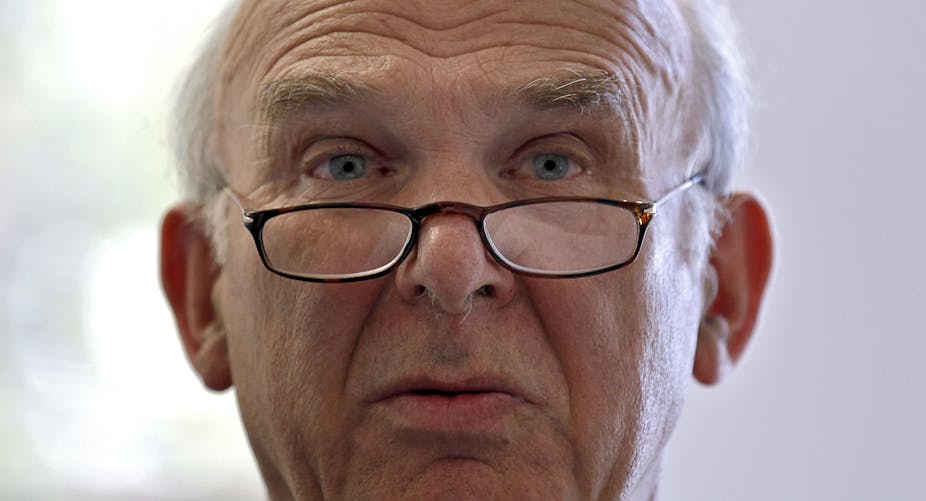If opinion pollsters are still sore from their election-night embarrassment, they can be consoled by the thought that economists fared even worse. High-profile members of that profession ejected from their Commons seats on May 7 included business secretary Vince Cable, pensions minister Steve Webb, schools minister David Laws and – in a small-hour moment that signalled the turning tide – shadow chancellor Ed Balls.
It was a far cry from 2010, when economists-turned-political-high-fliers such as Ruth Kelly and Kitty Ussher could quit the House of Commons while ahead, for top City and consultancy posts, even as the Labour Party slid from power. Although this year’s election saw some other well-known economists, including Rachel Reeves and Alex Salmond, safely returned to the House of Commons, this has been an unusually dark time for the traditionally dismal science.
Cost-of-living without them
The cull of coalition-era economists should not have been unexpected, given politicians’ growing reluctance to accept economic advice. Cameron’s Conservatives owe their victory in no small part to an economic recovery forged on principles which most economists had dismissed.
George Osborne staked his first term as chancellor on an immediate reduction of public expenditure, aimed at eliminating – within five years – a fiscal deficit that was close to 7% of GDP in 2010. That was more than a tall order. The monetary theory that best stood up to the global financial crisis suggests it is fundamentally impossible to close a fiscal deficit when the private sector is paying down debts and the current account is in deficit, which was the UK situation for most of 2010-2015.

The possibility of “expansionary fiscal contraction” – basically GDP growth in the midst of cuts – did get some empirical support from a 2009 paper by US-based economists Alberto Alesina and Silvia Ardagna. But their evidence (and a complementary public debt analysis by Kenneth Rogoff and Carmen Reinhart) were quickly challenged by most economists who re-examined it, with Paul Krugman throwing a last stick of Nobel dynamite onto the pyre.
Some small European states such as Latvia, Estonia and Ireland did manage to re-start their economic growth while imposing austerity budgets – but only by ratcheting down their wages and prices, via a big dose of unemployment, until their much-reduced costs sparked an export revival. Osborne has defied economic consensus by presiding over the recovery of a large economy without imposing a severe real wage reduction, while the external trade balance was deteriorating rather than improving.
Although tentative to start with, the upturn was strong enough in its final year for the chancellor to turn the electoral tide against his opposite number, who had predicted austerity would permanently “flatline” the economy.
Economists protest that the UK recovery took hold because the government diluted its austerity commitment. Osborne’s cuts choked off the recovery that was underway in 2010, as Balls and others had predicted, and growth only resumed when the chancellor retreated from his deficit reduction target in 2012. “Automatic stabilisers” – the fall in revenue and rise in obligatory spending after the double-dip into recession – ensured an extension of the fiscal stimulus, with the deficit only halved and not eliminated in the coalition’s five-year term. It’s not uncommon to hear the recovery ascribed to the quiet abandonment of the “long term plan”, rather than its enforcement.
A plague on all their houses
These protests from economists in the John Maynard Keynes camp aren’t, however, the only ones to have fallen on deaf electoral ears. The Conservatives’ success has also hardened their attitude to economic advice from the free-market think tanks that once expected a hotline to Number 11. Cameron’s return in a majority government should usher in a new golden era for the Institute of Economic Affairs (IEA), which drafted much of Margaret Thatcher‘s and John Major’s agendas.
But the IEA’s new priorities – aggressively paying down public debt, cutting taxes on the better-off, leaving the EU, relaxing planning laws to promote housebuilding, paving over the railways and tackling the “cost of living crisis” through lower excise duties – can expect a more lukewarm response from the re-installed treasury team.
Already three years into an economic recovery, Osborne’s priority will now be to fend off the cyclical downturn which traditionally hits the UK after five – the experience of every postwar two-term prime minister except Tony Blair. Having prospered rather than perished from his deficit-reduction delay, the chancellor is unlikely to fret about public debt – especially when its virtual costlessness, courtesy of the free-flowing money from quantitative easing, has let him run up more of it than almost any chancellor before.

And while headlining its reduction in the top rate of tax (on incomes over £150,000) and increases in the tax-free personal allowance, the last government achieved a significant revenue increase by letting people on middle incomes rise into the 40% tax band. That’s a convenient “fiscal drag” it won’t be hurrying to address.
The general failure of economists to anticipate the 2008 financial crisis might explain their current cold reception in the corridors of power. A functionalist reading of the election result could supply another reason for the culling of their Commons contingent. The UK is now committed to renegotiating and re-voting on its EU membership.
This will inevitably restore political demand for lawyers, a Commons bedrock whose ranks had curiously dwindled before 2015. Economists’ inability to explain, in a single soundbite, whether Brexit would be a catapult or a catastrophe may be another reason voters decided they were better out than in.

